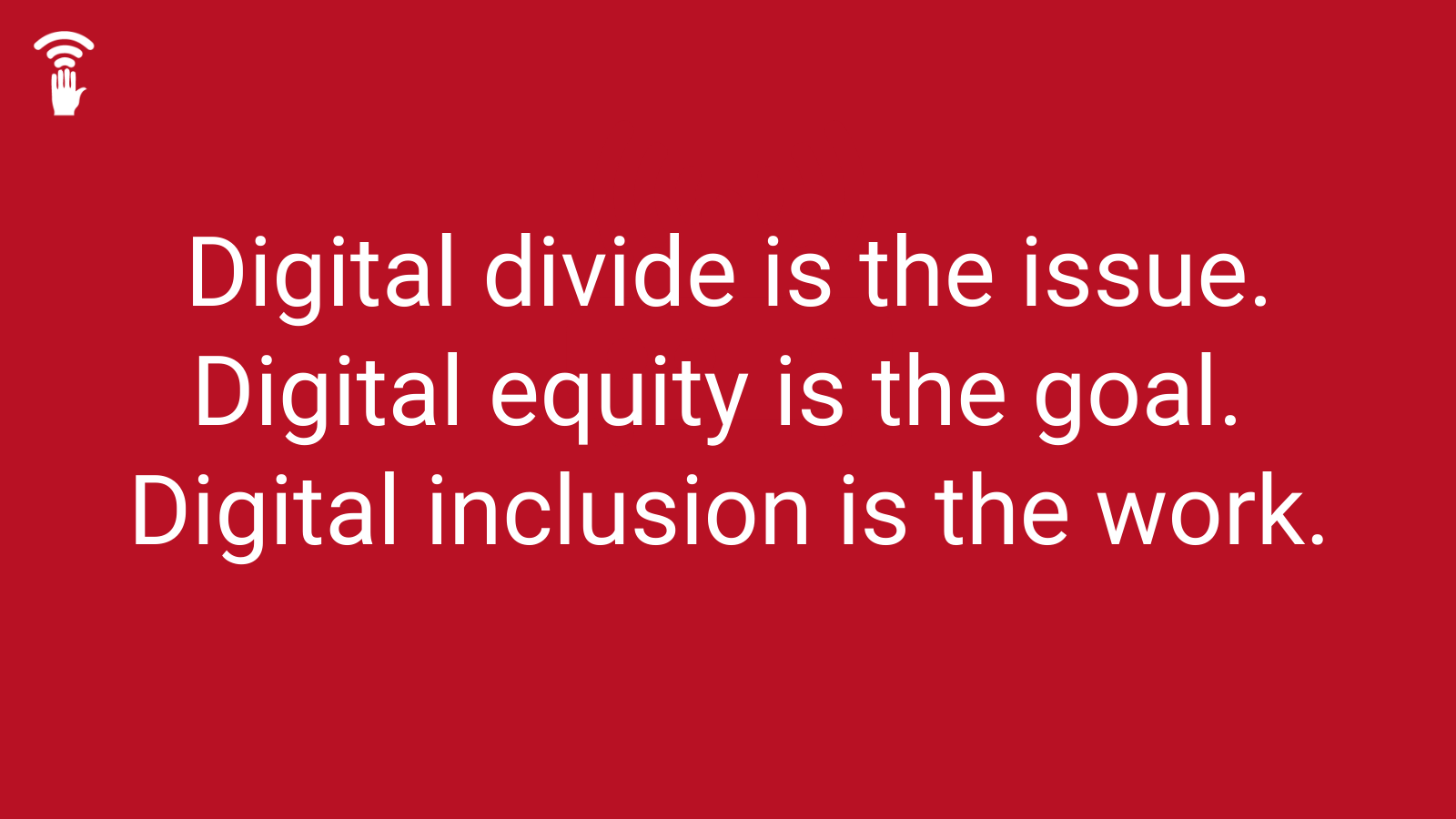The Carroll Technology and Innovation Council is equipping communities with tech resources, disseminating digital skills. and empowering intentional relationships with technology. We are working towards Digital Equity to address the Digital Divide.
Digital Divide
The digital divide is the gap in social and economic equality that occurs when some segments of a given population do not have equal access to Information and Communications Technology (ICT) and reliable high-speed Internet service. The digital divide refers to the gap between those who have the access, skills, and support for effective digital participation – and those who do not. The term, originating in the 1990s, is often used to recognize a disparity among those without dependable broadband service. It can also be used to highlight a difference in knowledge of digital tools, practice of digital skills, and confidence in using technology.
Digital Equity
Digital equity is a condition in which all individuals and communities have the information technology capacity needed for full participation in our society.
As technology becomes more central to everyday life, it is essential to equip communities with the tools and resources to access technology and use it effectively to meet their needs and participate in recreation, health and wellness care, spiritual and personal development, economic transformation, consumption, and beyond. Digital equity is necessary for civic and cultural participation, employment, lifelong learning, and access to essential services.
Digital Inclusion
Digital Inclusion refers to the activities necessary to ensure communities have access to and use of Information and Communication Technologies (ICTs). This includes five elements:
1. Affordable, robust broadband internet service;
2. Internet-enabled devices that meet the needs of the user;
3. Access to digital literacy training;
4. Quality technical support; and
5. Applications and online content designed to enable and encourage self-sufficiency, participation and collaboration.
Digital Literacy/Skills
NDIA recommends the American Library Association’s definition of Digital Literacy via their Digital Literacy Task Force:
Digital Literacy is the ability to use information and communication technologies to find, evaluate, create, and communicate information, requiring both cognitive and technical skills.
A person with digital literacy skills:
- Possesses the variety of skills – technical and cognitive – required to find, understand, evaluate, create, and communicate digital information in a wide variety of formats;
- Is able to use diverse technologies appropriately and effectively to retrieve information, interpret results, and judge the quality of that information;
- Understands the relationship between technology, life-long learning, personal privacy, and stewardship of information;
- Uses these skills and the appropriate technology to communicate and collaborate with peers, colleagues, family, and on occasion, the general public; and
- Uses these skills to actively participate in civic society and contribute to a vibrant, informed, and engaged community.

